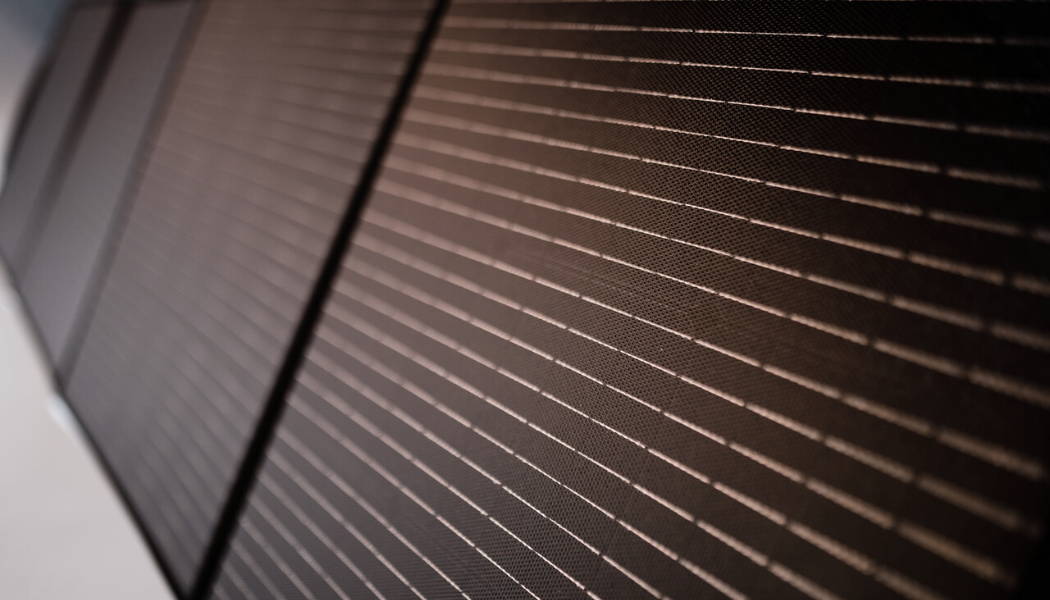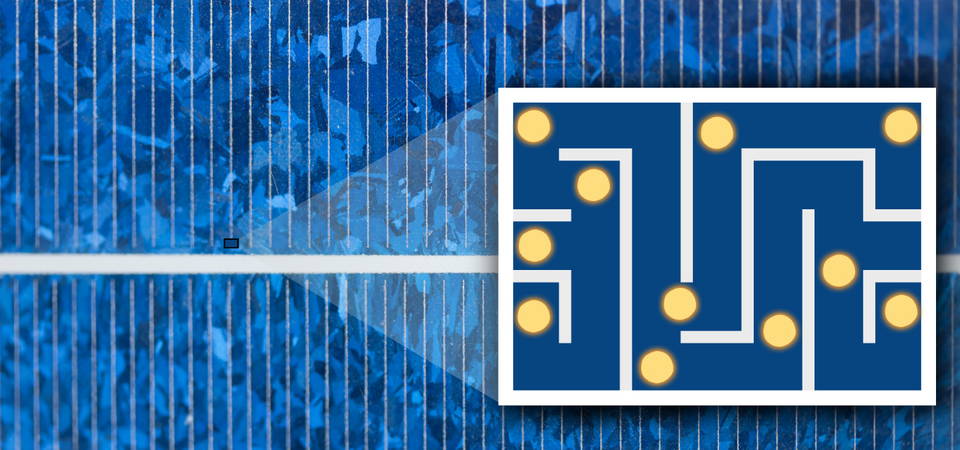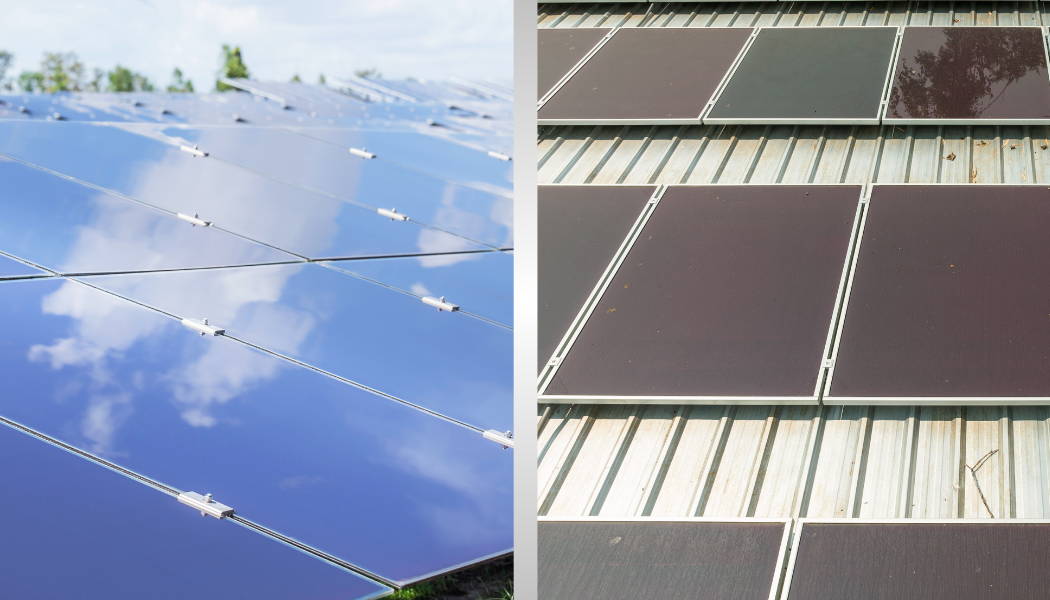Monocrystalline vs. Polycrystalline Panels
Estimated reading time: 6 minutes
The majority of solar panels are made of wafer-based solar cells, or photovoltaic cells. These cells are devices that convert energy from light to electricity.
Each solar panel will have multiple solar cells, usually encased in a glass or other protective material.
Most residential solar panels use cells that fall into one of two categories: monocrystalline or polycrystalline. These are a type of first-generation photovoltaics, and monocrystalline panels are generally preferred over polycrystalline panels in current residential settings.
Thin film cells, a different, non-wafer-based type of cell that is increasing in popularity, are classified as second-generation photovoltaics.
This article will explore the different solar panel cell types--including monocrystalline, polycrystalline, and thin film--as well as the benefits and drawbacks of each.
Overview of Solar Panel Cell Types
Monocrystalline Solar Cells:
Monocrystalline solar cells are made from a single silicon crystal - hence, the “mono” in the name. Silicon is a crystalline metalloid that creates a photovoltaic effect, where voltage levels change with exposure to light.
Since silicon cell wafers are cut from a single crystal, they have a pure, homogenous structure, which allows for an easy flow of electrons and therefore high efficiency.
Additionally, using cells made from single crystal sheets means a more seamless, clear cell. Monocrystalline cells are most commonly used for all-black panels, as they are dark in color and do not usually have any blue hues.

Monocrystalline solar cells
Polycrystalline Solar Cells:
Just as “mono” refers to “one”, the “poly” in polycrystalline means “many”. Polycrystalline cells are made from multiple silicon crystals.
To do this, the crystals are melted and blended, and the resulting blend is cut into cells. Because they are blended, however, the interior structure is less efficient for electron flow: borders in the grain of the crystal blend act similar to a maze.
This translates to a decrease in efficiency for power production, and polycrystalline cells can be recognized by their visible grain borders. These give the cell a multifaceted, almost iridescent appearance and a blue hue.
Because manufacturers can use smaller, less expensive crystals to make these cells, they’re typically less expensive than monocrystalline cells.

The multi-crystal structure of the cells in polycrystalline panels can be seen by the naked eye. These visible grain borders don't allow electrons to move as freely as monocrystalline panels.
Thin Film Solar Cells:
Thin film solar cells are a more recently developed type of cell. They are usually made with calcium telluride, amorphous silicon, or another photovoltaic material, which is deposited on metal or glass in a layer that can be as thin as a few nanometers.
One of thin film solar cells’ main advantages is their flexibility and light weight. This makes them well suited for building-integrated photovoltaics, where standard construction materials like windows, metal sheets, and more are replaced with photovoltaic components.
This can add solar power to a building without needing more conspicuous solar panels.
The main reason thin film cells are not quite as popular today is that their efficiency and degradation are less advanced, partially due to the fact that they’re a newer technology.
Most thin film solar cells will degrade at twice the rate of standard silicon wafer cells, as they’re much thinner.

Thin film solar panels
Things to Consider
When comparing the different types of solar cells, it’s important to remember a few things that could vary based on the type utilized:
Lifespan & durability:
When it comes to lifespan and degradation, monocrystalline panels are the winner. Polycrystalline blends cause panels to degrade at a higher rate.
According to the reports from National Renewable Energy Laboratory (NREL), standard silicon based panels have a median degradation rate of 0.5% per year, while thin film solar panels will degrade at twice that rate.
Degradation leads to a shorter lifespan - thin film panels will last for about 10-20 years, significantly shorter than the 25-30 year lifespan of polycrystalline modules and the 30+ year lifespan of most monocrystalline modules.
Additionally, while thin film panels’ flexibility can be beneficial, it can also cause difficulties with durability, a problem that the more robust crystalline panels don’t experience as often.
Efficiency:
Monocrystalline cells have a homogenous structure and are the most efficient of the three types we’ve discussed in this article.
The homogenous structure provides more space and less barriers for electrons. Polycrystalline panels have grain barriers that prevent electrons from moving freely, which makes them produce less energy in the same amount of time.
On average, efficiencies for monocrystalline panels range from 15% to 25%, while polycrystalline panels are only 14-18% efficient.
Thin film solar panels have an efficiency of between 7% and 18% in most cases, though higher efficiencies have been achieved for commercial applications.
Performance in various weather conditions:
Clouds and heat are common things that can affect your solar system’s performance, but these will affect some cell types more than others.
It may seem counterintuitive, but heat actually can damage a cell’s solar production. All cells are affected by this, but polycrystalline cells the most. Monocrystalline cells fare better, but thin-film solar panels are the least affected.
This, in combination with high low-light performance, makes thin film panels a good option for utility-scale solar farms in desert locations, where space is available.
Monocrystalline solar panels, especially bifacial monocrystalline panels, can also perform relatively well in low-light conditions.
Though they are not able to capture as much energy in low light, bifacial technology can also improve the performance of polycrystalline panels.
Cost:
Solar costs can vary widely, but generally monocrystalline cells are the most expensive out of the three types discussed in this article.
Since they’re less efficient and cost less money to manufacture, polycrystalline cells are also less expensive than monocrystalline cells.
Thin film solar panels are generally the least expensive, with the highest payback time. However, their lower lifespan means you will need to replace them much more often than standard panels.
Project Solar & Our Recommendations
If you know Project Solar, you know our top commitment is to providing the best price and investment possible.
We believe that the best solar panels are the ones that will provide you with the most value over the long term. That's why we recommend and exclusively offer monocrystalline panels, rather than polycrystalline panels.
Monocrystalline panels are more efficient, meaning they convert more sunlight into electricity. They also last longer and have better performance in various weather conditions. For these reasons, they are the best choice for most homeowners.
Thin film solar panels are a newer technology, and they are not yet as efficient or durable as monocrystalline panels. Until significant improvements are made in lifespan and efficiency, they're not reliable enough for our standards.
We source our panels from Tier 1 manufacturers, which ensures that they are high-quality and reliable. For a list of our equipment, check out our Equipment Specifications Page.